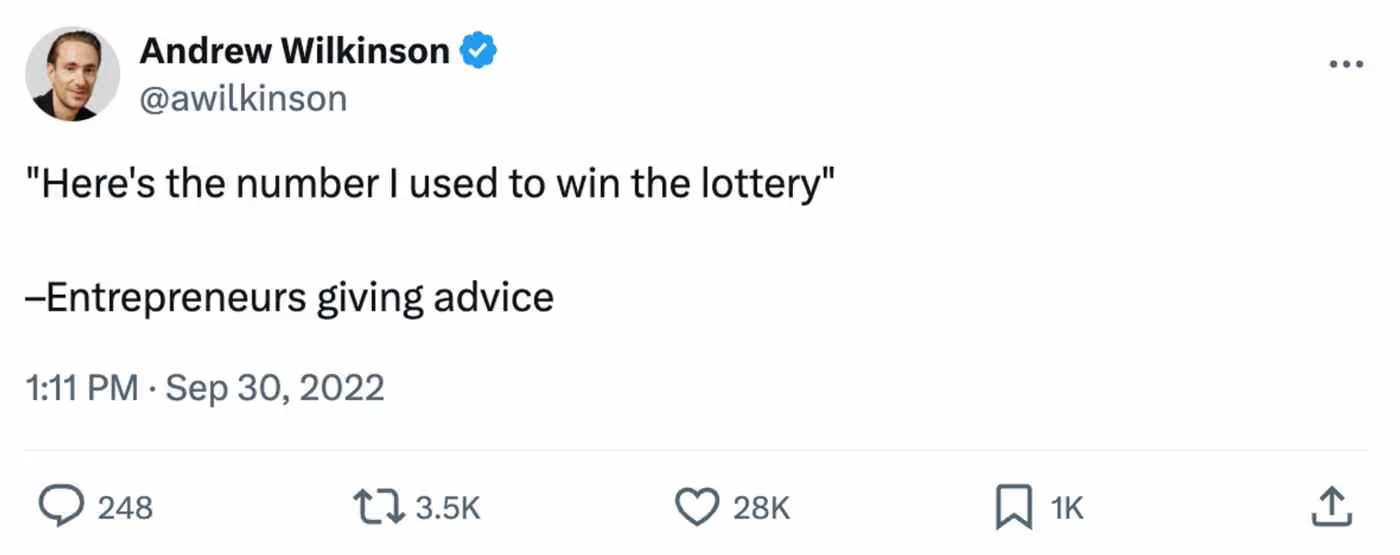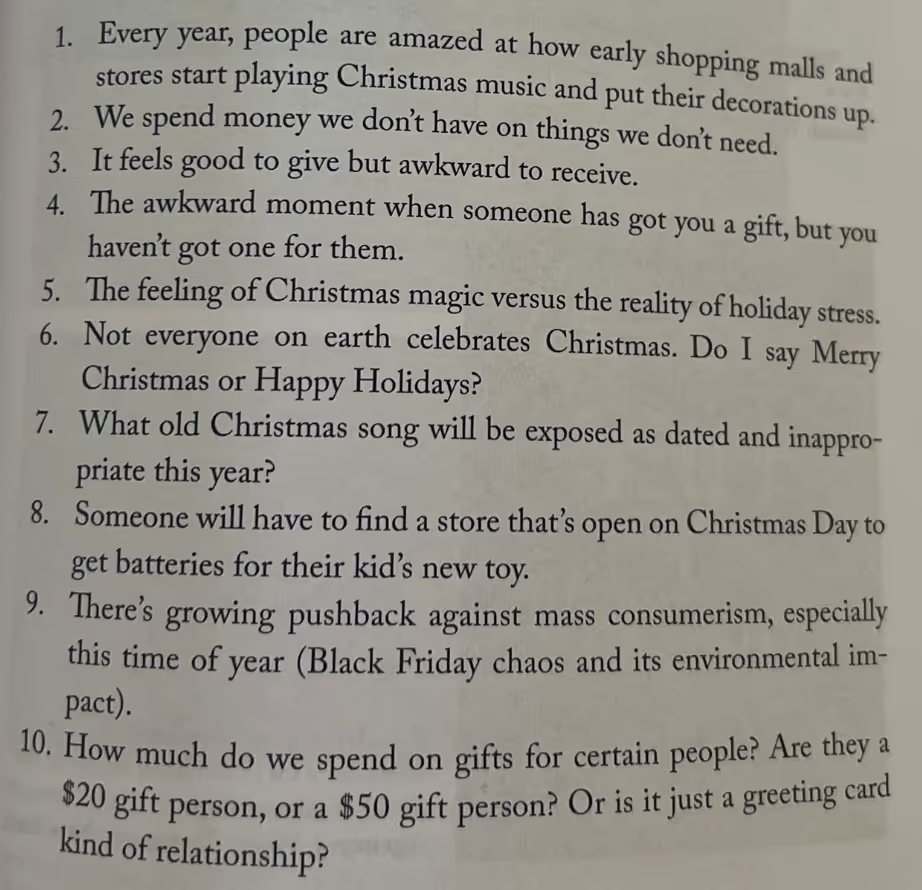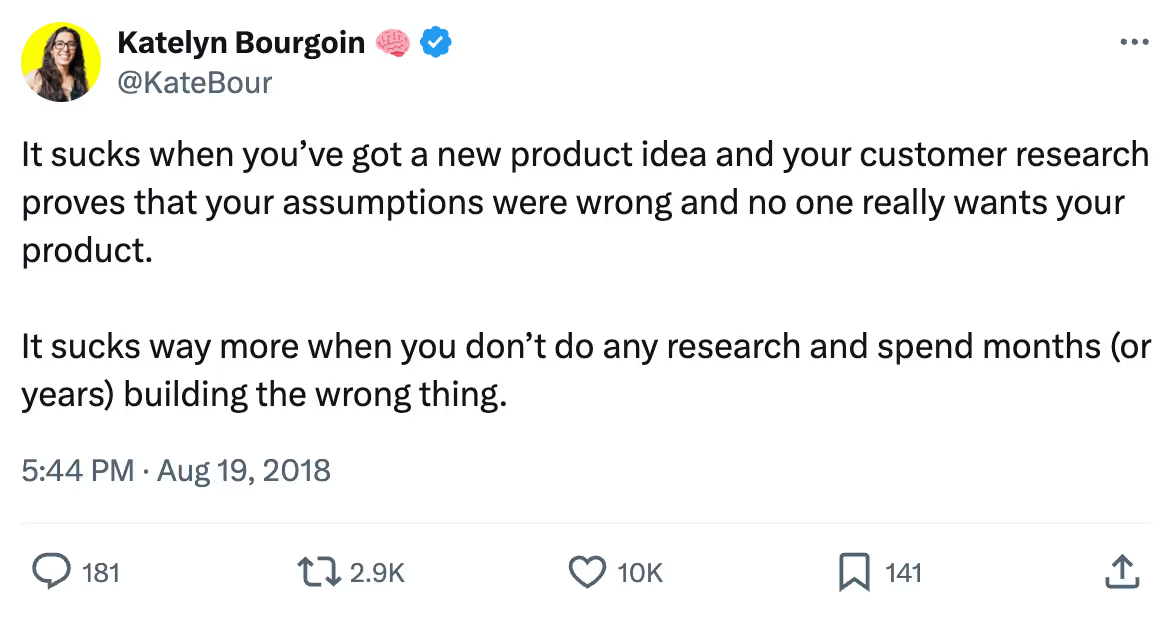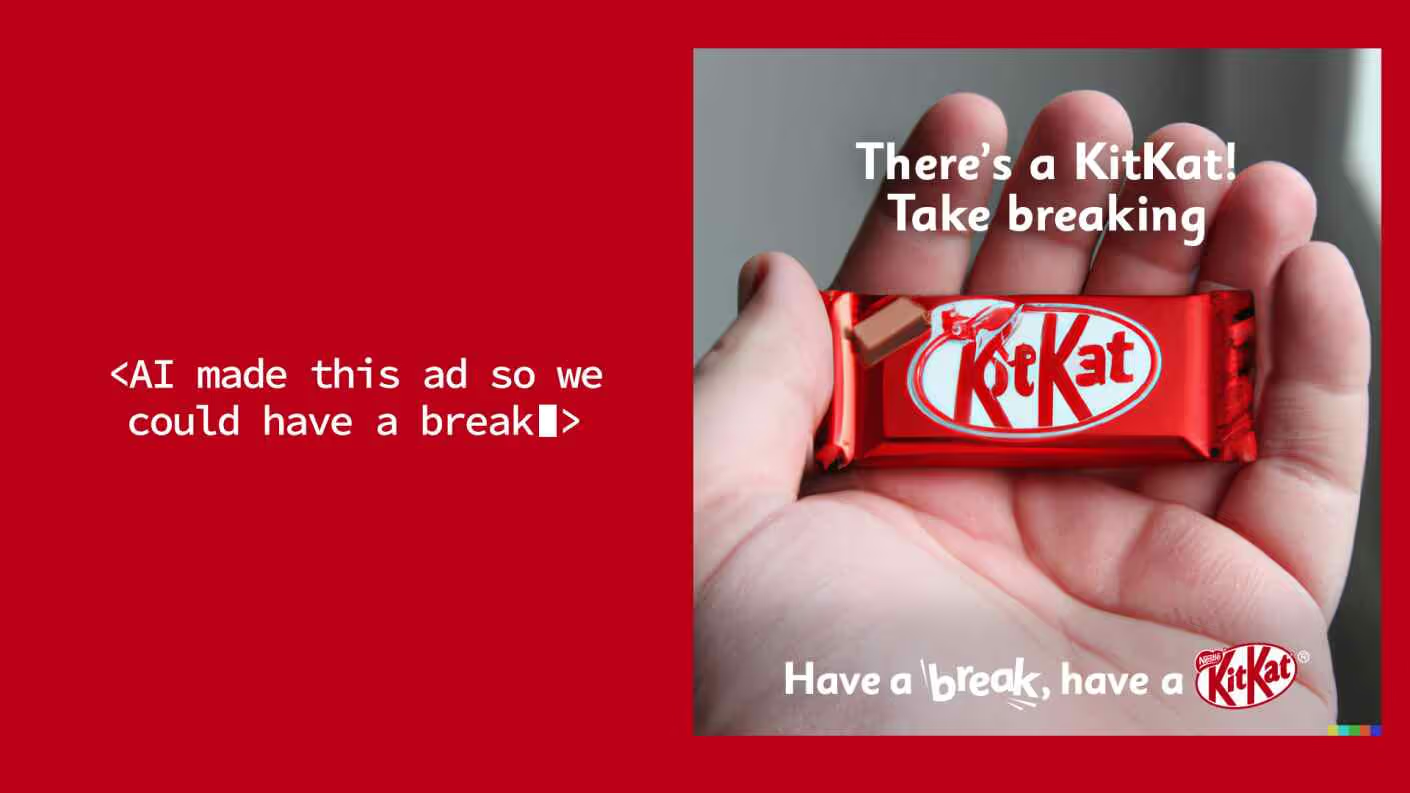
Conversation

🥳 Feedback Received!
Thanks for taking a moment to share your thoughts — it genuinely helps us make each chapter sharper.
What happens next:
- Your feedback goes straight to our product team.
- We’ll use it to refine lessons, clarify examples, and make the program even more useful.
Appreciate you helping make this program better for everyone.
Ready for your next challenge? 👇
Tap into Relatable Truths
This is one of my favorite tweets about startups:

Clearly, it resonated with quite a lot of other people, too.
Why?
It summarizes a truth that I immediately got but failed to articulate previously:
Every successful person got lucky, and their success is nearly impossible to replicate.
Note: Paul Graham says that a founder’s best way to replicate this is to increase their luck surface area by meeting people, writing online, building an audience, living in a major city, etc.
This tweet taps into one of the most powerful ideas behind impactful marketing: relatable truths.
Tapping into relatable truths makes your message more powerful and memorable.
In the book A Self-Help Guide for Copywriters, Dan gives examples of relatable truths you can tap into during Christmas holidays:

Notice how you felt after each of them. Did you find yourself nodding along?
I know I did.
Let’s dive into the different types of relatable truths.
Here are a few ways to categorize relatable truths:
- Context: Truths related to where the message is seen. For example, an ad in LA:

- Holidays/events: Truths related to the current or recurring events such as advertising your product during Valentine’s Day, Christmas, a US election, a recession, or a global pandemic.
- Industry: Truths related to the specific industry you operate in. For example, startups/business (like Andrew’s tweet), kids toys, dating, clothing, and for marketers:

- Cultural:Truths related to social, societal, or cultural trends. Ranging from:
- Hype trends: AI, crypto, Clubhouse, BeReal, and Squid Game.
- Culture shifts: Sustainability, remote work, DEI, personal brands, creator economy, urban diaspora, video > books, anon accounts, and mental health awareness.
- Technological shifts: Internet, mobile, AI, blockchain, virtual reality/metaverse, 3d printing, quantum computing, and nuclear fusion.
- Memes: rick rolling, ok boomer… too many to list.

- Human: Truths related to core human behavior and psychology. This is the most broad-reaching and hardest to categorize. For example, how people act in an embarrassing moment:

Spend time brainstorming relatable truths for your product, industry, culture, and context. And add to this list whenever you come across one.
They’ll help your marketing resonate.


